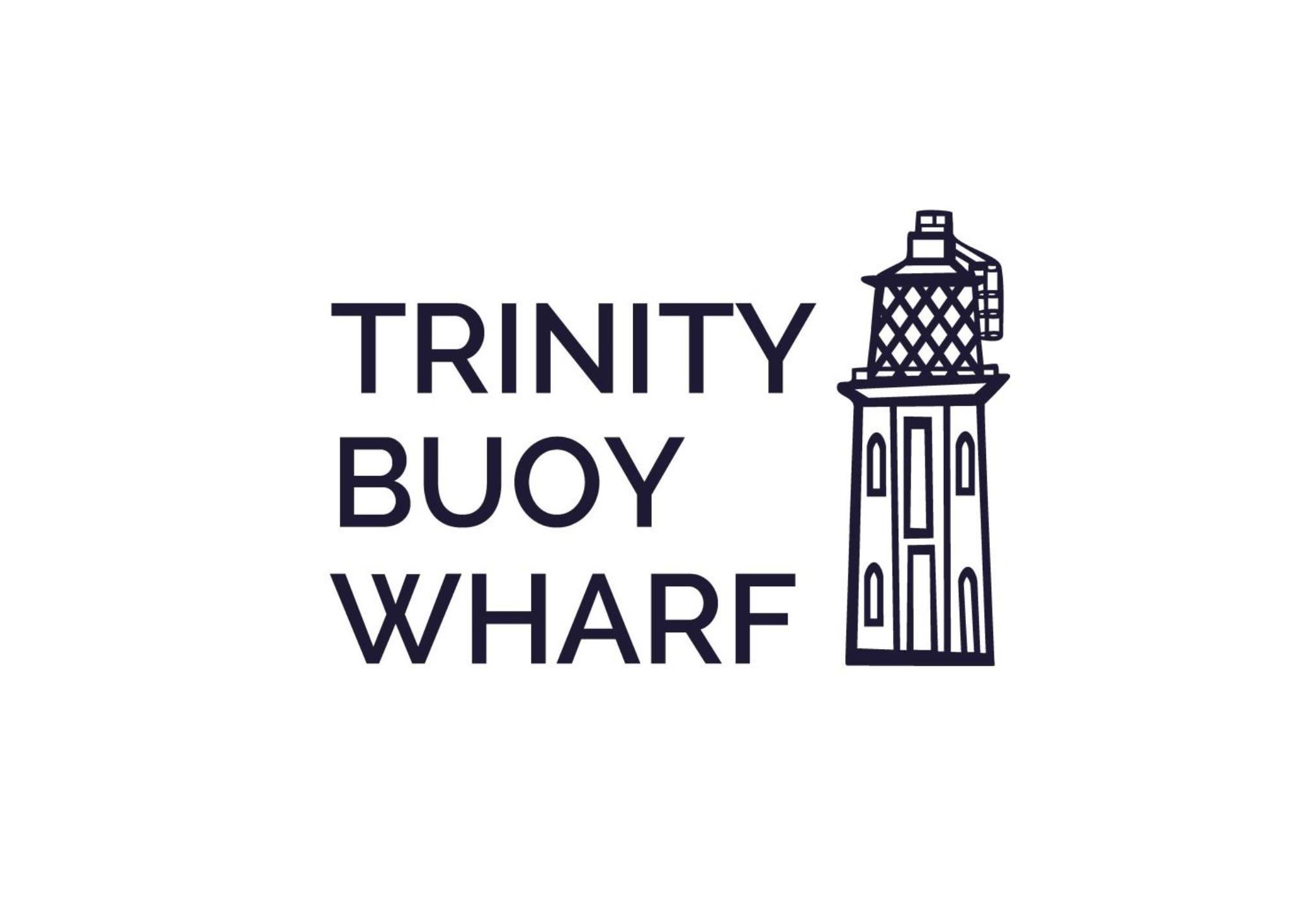
About Trinity Buoy Wharf
With the banks of the Thames River in London being increasingly covered with high rise luxury housing, Trinity Buoy Wharf and its buildings stand as unique survivors and reminders of an era when London and its maritime shipping, trade, commerce and shipbuilding industries were at their height, being the greatest in the world.
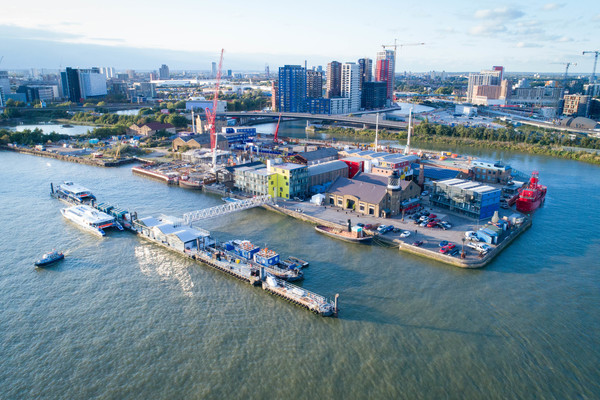
Built and operated by the Corporation of Trinity House from 1803 to 1988, the fine buildings over a 185 year period were used to train lighthouse keepers and to repair and maintain lightships, seamarks and buoyage along the Thames from London to the Suffolk and Kent coasts. More recently turned into a centre for art, culture, maritime history, education and creative businesses, the wharf acts as a beacon within the local community whilst spreading art and culture far and wide.
The vessels
The rich maritime, industrial and social history of Trinity Buoy Wharf; its buildings, training lighthouse and the Thames, River Lee and their banks nearby, the Wharf aims to bring to life in a range of new displays over the next few years. They also hope to bring together a heritage boat collection of vessels directly associated with London and the Thames, its ports, rivers and shipbuilding heritage. These are mostly larger steel steam and motor vessels and are at high risk of being lost.
Several vessels have been identified and are either on static display, on temporary moorings or are in the process of being transferred over subject to mooring availability.

Diana
Riveted steel/wrought iron Thames Lighter built c’1890 by London builders unknown. Typical of many hundreds of ‘dumb barges’ used on the Thames, canals, tributaries, docks and Port of London for the transport of cargo, aggregates and supplies between wharves, warehouses and ships. Usually towed singly or in large groups by river or dock tugs, they were also hand rowed by one man going with the tide, this is known as ‘barge driving’ and is still celebrated in the annual Thames Barge Driving Match.
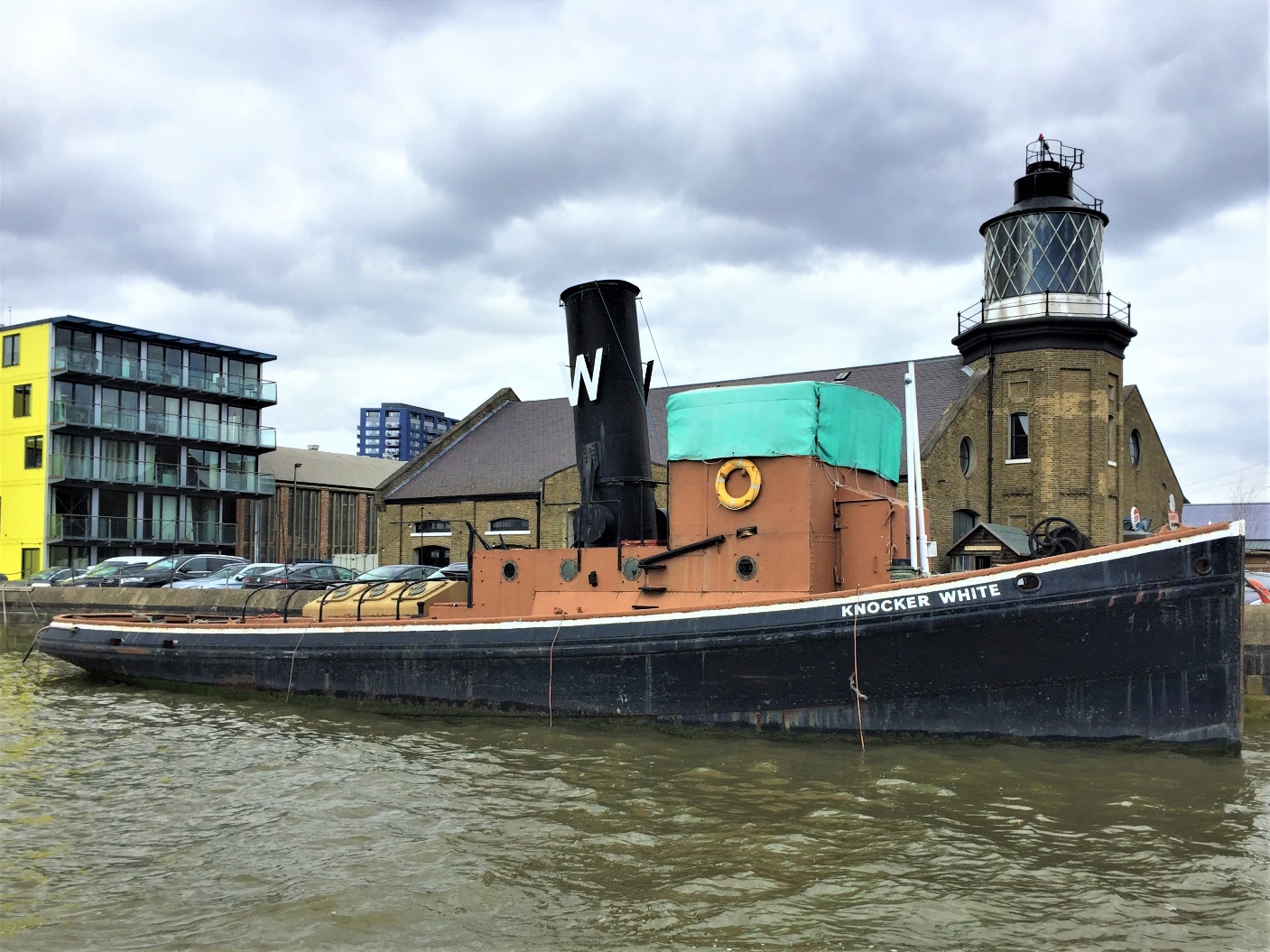
M.T. Knocker White
Thames steam tug, built in 1924 by T. van Duivendijk, Lekkerkerk, Netherlands with triple expansion steam engine and boiler. Supplied as S.T. ‘Cairnrock’, for Harrison’s Lighterage and Coaling Company, London and possibly used at Dunkirk in WW11. She later passed into the ownership of W. E. White & Sons, Rotherhithe and in 1962 was renamed and converted to diesel power with the installation of two Petter engines, with alterations to funnel, fiddley and wheelhouse. Used for moving barges between ships and warehouses on the Thames and for towing larger vessels on coastal runs. Sold 1982 and sent for scrap soon after. Rescued in 1984 by Museum of London Docklands who displayed her outside their museum after partial restoration. Transferred to Trinity Buoy Wharf October 2016.
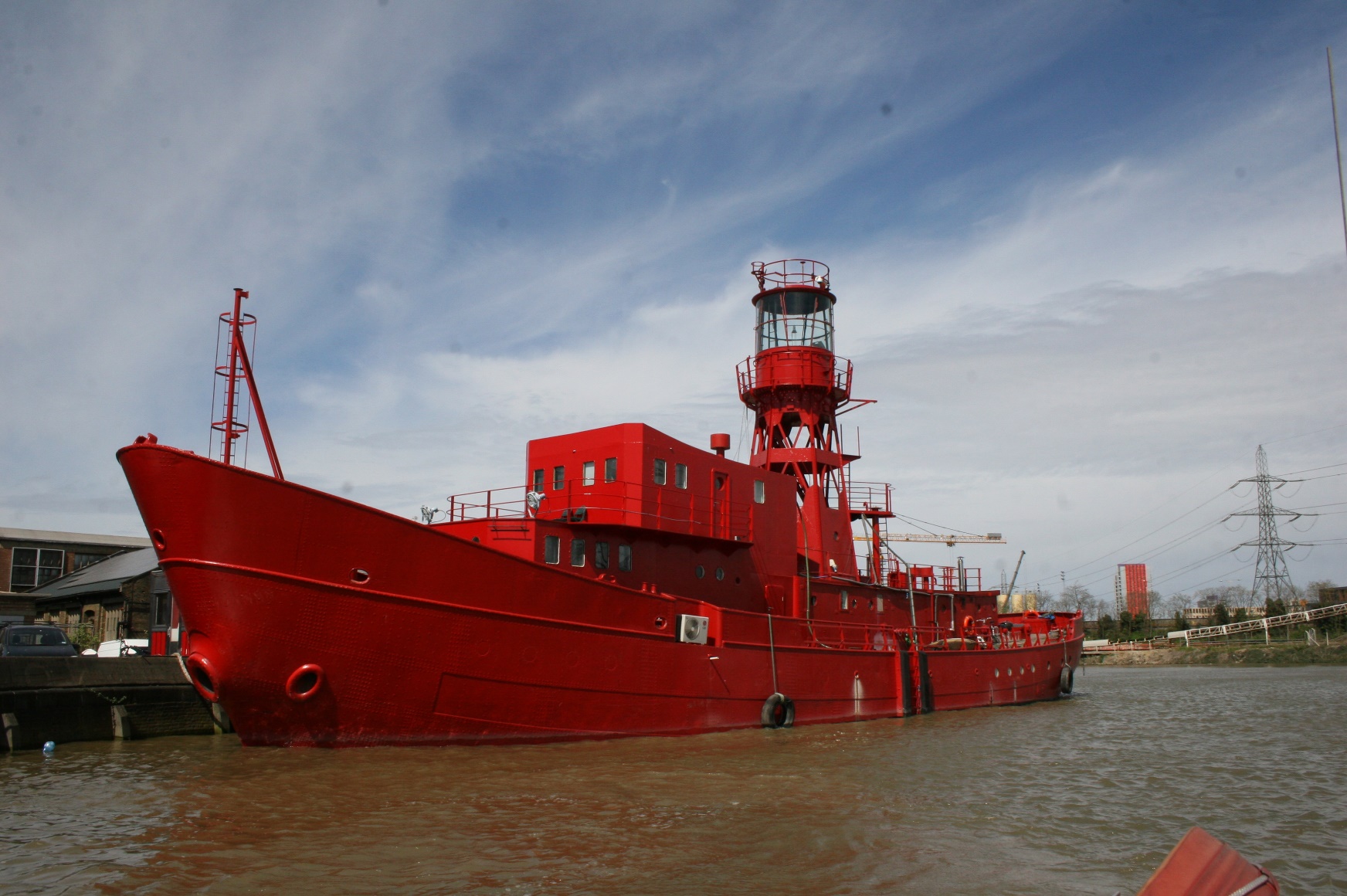
Lightship LV95
Lightship built in 1939 by Philip and Sons of Dartmouth for Trinity House and used mainly at their South Goodwin station on the Goodwin Sands and at other stations including Inner Dowsing off the coast of Norfolk. She is 1 of 3 built to the same design; 93 in Victoria Dock and 94 in Rotterdam. She was the first UK Light Vessel to be converted to solar power in the 1990's to allow for automatic unmanned operation and was in service until 2003 following a complete refit in 1999 in which all her original machinery and crew accommodation were removed. Sold at auction by Trinity House to the owner of Port Werburgh marina on the Medway she was later sold on to Ben Phillips who converted her to a floating music recording studio and based her at Trinity Buoy Wharf from 2008.
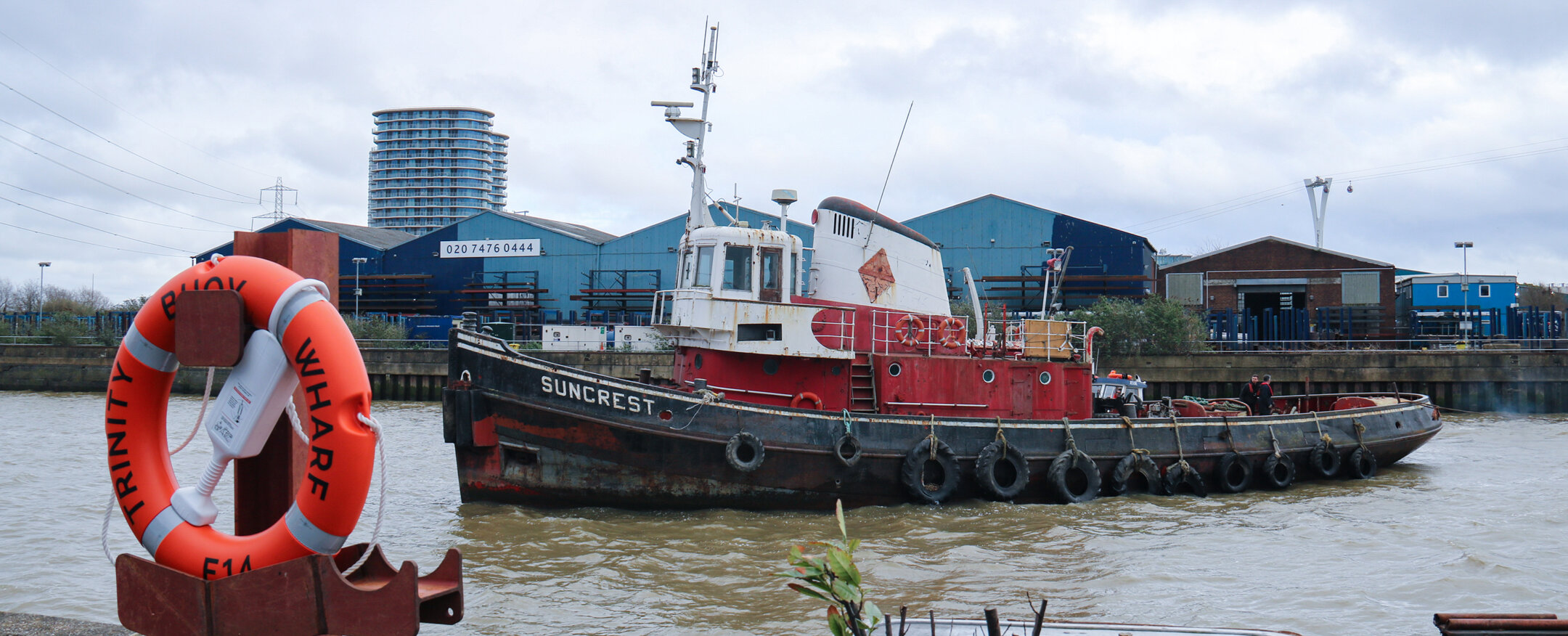
Suncrest (SUN XXIII)
The former SUN XXIII was built for ship towage uses on the Thames. Built in 1961 by Phillip & Sons at Dartmouth, she was built for the purpose of ship towage work on the River Thames. At the time, her 1080bhp Mirrlees Blackstone engine meant she was one of the most powerful tugs in service. Sun XXIII remained in operation until 2005 and was moved to Trinity Buoy Wharf in 2020 after a long time laid up and being maintained by volunteers. She is one of the last two sun tugs, and will be preserved for future generations to see and enjoy.
The world's only surviving complete Victorian steamship. Built by Mackenzie, MacAlpine & Co. at Bow Creek, East London, and launched on 16 September 1890. She traded around the south and west coasts of England, the Thames and Medway, and between Britain, Ireland and the continental ports, carrying cargoes including grain, iron ore, scrap steel, pit props, china clay, railway steel, general cargoes of casked and baled goods, and granite blocks for the Caledonian Canal. In her first decade of service, she visited 140 ports.
In May 1900, she was sold to Blanco Hermanos y Cia, of Bilbao, Spain, the beginning of seventy-four years under the Spanish flag, under the name MARIA. Under several different owners, she traded around the Spanish coast with cargoes such as coal and scrap iron. During the First World War, she carried pig iron for the French government from the foundry at Santiago to Bayonne and Burdeos under French naval escort. Her appearance remained little changed for many years until, in a 1966 refit, her coal-fired boiler was converted to oil, the stern whaleback and the mizzen mast were taken out, the foremast, main mast and funnel were shortened, and the forecastle was extended.
In May 1974, she was purchased by the Maritime Trust and, in June, steamed under her own power to St Katharine Docks, London. She was restored at Rochester, renamed ROBIN, and opened to the public as part of the trust's collection of ships, which at that time were berthed in St Katharine Dock. In 1991, she moved to West India Quay and was subsequently bought by, what is now, the SS Robin Trust. New restoration work began in March 2002, and she was equipped as an innovative education centre with a successful photographic gallery.
In June 2008, a £1.9m funding package was raised from Crossrail by Kampfner Development Consultancy and an extensive programme of conservation work began. SS Robin made her first sea journey for 35 years when she was carefully towed from her berth in London's West India Dock to a slipway in Lowestoft, Suffolk. She was extensively restored under the guidance and management of KDC, who conducted an extensive appraisal of costs and conservation options, arriving at a unique and radical solution to the combined challenges of a fixed budget and the tender condition of the vessel's riveted hull. In order to preserve and display her original riveted fabric, the vessel was lifted onto a purpose-built floating pontoon, commissioned and built in Poland, in a dramatic and successful crane operation in June 2010.
In December 2023 SS Robin arrived at her new home at Trinity Buoy Wharf, Bow Creek, close to where she was originally built. She will be restored and opened to the public in 2024.
LATEST NEWS:
November 2023: The world's only surviving complete Victorian steamship, SS Robin, will arrive at its new home at Trinity Buoy Wharf on 10 December 2023. Read more
Find out more:
Follow them on social media:



